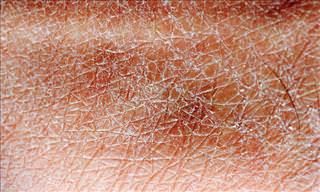Getting enough Vitamin D function effectively, but people often don’t consume enough. In fact, experts estimate that 40% of the population in the Western world suffers from a lack of vitamin D...
This substance is produced, among other things, by cholesterol in skin tissue exposed to sunlight, However, it is common knowledge that soaking up rays can harm our health and even cause skin cancer. This conflict is what led this article – learn about the importance of this vitamin and how to correctly use the sun to build it up in your body!

The most recommended source of vitamin D - sunlight
There is a good reason why vitamin D is also called "the sunshine vitamin," as cholesterol found in the skin produces it after being exposed to sunlight. The same vitamin helps us maintain health by helping to absorb calcium and phosphorus-2 minerals that are very important for bone strengthening, which explains why high vitamin D intake is associated with a reduced risk of bone loss, as well as cancer and depression.
Besides sun exposure, vitamin D can also be consumed through salmon, tuna, sardines, beef liver, egg whites, and mushrooms. However, if you aren’t exposed to sunlight for at least 10-30 minutes a day, you should also consume vitamin D supplements. It's important to note that ultraviolet rays don’t penetrate glass windows, so even if you work in an office well-lit by sunlight - you aren’t really absorbing vitamin D.
When should you be exposed to the sun for maximum vitamin D absorption?
The answer is in the early afternoon, according to a study conducted in 2013. At noon the sun is at the highest point in the sky, and its ultraviolet rays are strong enough to nourish the body with vitamin D. With that being said, the recommendation many know is to spend about 15 minutes a day in the sun, but this common recommendation is not correct when it comes to the afternoon. In the middle of the day, you can make do with only 10-30 minutes of exposure, three times a week. If you are concerned about the health of your skin, it is important that you read the conclusions of a study conducted at the Institute for Cancer Research in Oslo, Norway, where it was found that the sun's rays in the late afternoon place the body at greater risk of developing skin cancer than those in the early afternoon.

Does skin color affect the production of vitamin D in the body?
The color of our skin is affected by the amount of melanin in it. People with darker skin have a higher amount of melanin, which helps protect the skin from sun damage and is actually a "natural sunscreen" that protects against skin burns and cancer. However, dark skin is both a blessing and a curse because people with darker skin need to spend more time under the sun's rays to absorb vitamin D effectively. Therefore, people with darker skin should spend 30 minutes in the sun at least three times a week. On the other hand, if you have lighter skin, it is recommended that you spend no more than 10 minutes in the sun, three times a week.
Does exposing more skin to sunlight help increase vitamin D absorb?
Because vitamin D is produced by the skin's cholesterol, exposing more skin to sunlight can help the body enjoy more vitamin D. Scientists recommend exposing about a third of the body's skin to sunlight for safe and optimal absorption - this recommendation suggests wearing a tank top and shorts and spending about 10-30 minutes in the sun, depending on your skin color, three times a week. You can wear a hat and sunglasses to protect your face, since the skin on our faces produces a very small amount of vitamin D.

Does sunscreen affect absorption of vitamin D from the sun?
Creams with different protection factors contain chemicals that reflect, absorb, or scatter the rays of sunlight, and when this happens, the skin is exposed to a lower amount of ultraviolet light. Because these light rays are important for the production of vitamin D, the protective factor may indeed prevent the process; SPF 30, for example, reduces the production of vitamin D in the body by 95%. However, if you plan to spend a lot of time under the sun, or your skin is particularly sensitive, you shouldn’t skip the sunscreen, and make sure you get enough vitamin D through the food you eat or supplements. You can also expose your body for the amount of time you need in sunlight, and then rub on some sunscreen.
What are the dangers of too much exposure to sunlight?
While exposure to sunlight is important for the absorption and production of vitamin D, like anything else too much sunlight, can be harmful in different ways:
- Skin burns - This is the most common phenomenon of sun damage when in extreme cases it can lead not only to redness and sensitivity but also to blisters.
- Eye Damage - Long exposure to ultraviolet rays damages the cornea and increases the risk of developing cataracts.
- Skin aging and other changes - Sunlight can make your skin grow old and wrinkle faster. In addition, freckles, moles, and other unwanted changes can occur on your skin due to excessive sun exposure.
- Heat stroke - In this state of dehydration, the body temperature rises to a dangerous level due to prolonged exposure to the sun.
- Skin cancer - It is common knowledge that too much exposure to sunlight can cause skin cancer, and it is important to be aware of the issue and to ensure safe exposure to the sun. If you are concerned about the development of skin cancer in you or in people who are close to you, take this test to find out if you know how to identify cancerous moles and beauty marks.
If you plan on spending a lot of time in the sun, apply a sunscreen every two to three hours, especially if you are sweating or swimming. Do this after exposure to the sun for 10-30 minutes, depending on your skin type.

In conclusion
Regular exposure to the sun is important and natural to the body, and its purpose is to help it produce enough vitamin D. You should aim to spend 10-30 minutes (depending on your skin tone) in the sun at noon, several times a week. You can continue to consume supplements that contain vitamin D and of course, it is recommended to eat foods that are rich in it, especially in the winter months. Finally, do not forget to put some sunscreen on every 2-3 hours if you plan on being in the sun for a long time. Have a safe and healthy summer!
 Go to BabaMail
Go to BabaMail




























